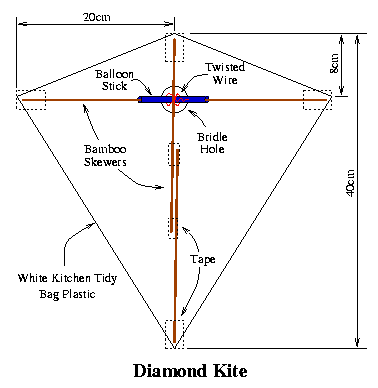
First off, did you know that the very word “kite” has its own specific mathematical meaning? A kite is any quadrilateral with two pairs of equal adjacent edges. So, while not every mathematical kite can form a physical kite that will actually fly, any time you make a classic diamond kite, you are exploring the properties of the mathematical kite shape. (Ironically, the word “diamond” is generally taken to mean “rhombus” mathematically, so while all diamonds are (math) kites, almost no (flying) kites are in fact diamonds..) Bonus points for making a Penrose kite-shaped kite.
Turning to more complicated kite designs, here are a few more you might want to try. Jeff Duntemann gives very complete directions for building a lovely tetrahedral kite.
Now this is a project that can be taken to extremes, as Diane Hislop and her classes of fourth-grade students have found out over the years
:
Finally, other polyhedral shapes are possible as well, as this photo of a design by Diana Ross and Roberto Trinchero shows
Anyone up for building an icosahedral kite? Share photos of your FMOs (Flying Mathematical Objects) in the comments below — and may the wind be always in your sails.
ADVERTISEMENT










